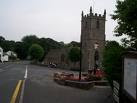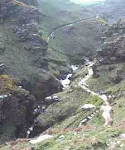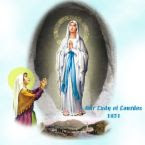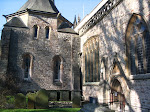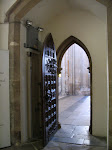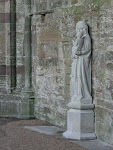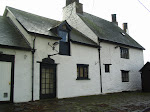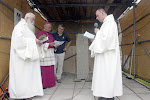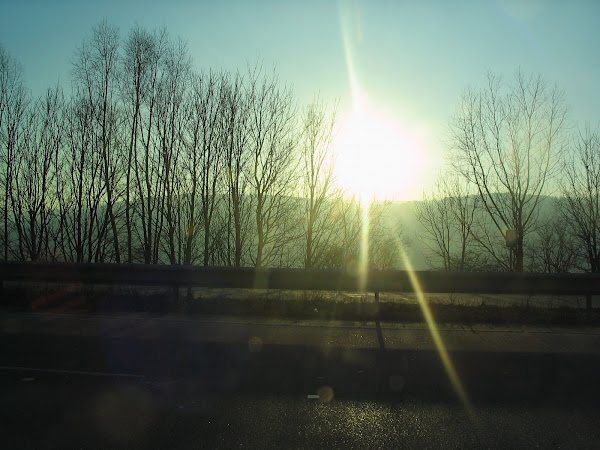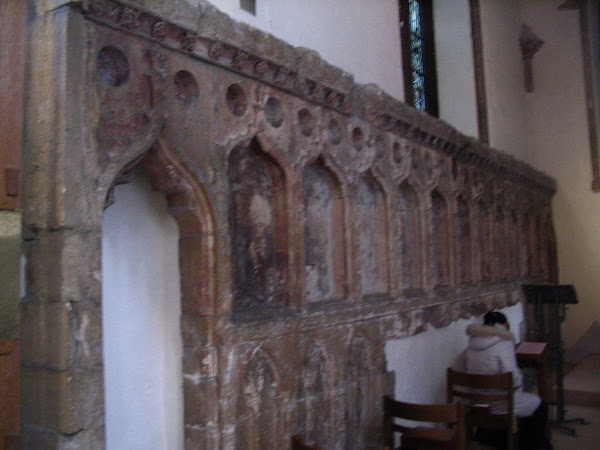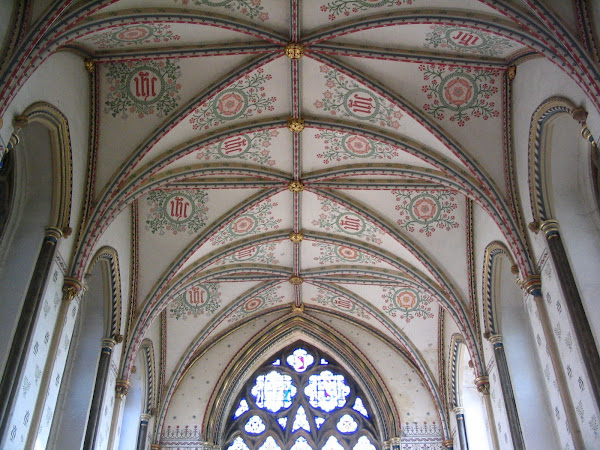



I cannot post very much today, but am just putting in an update of an exciting find.
I have written to various people and so I am waiting for feedback. I recently dicovered the Jullianus tombstone inside Tredunnock Church. Tredunnock is a village, north of Caerleon but on the banks of the Usk. This stone has only recently been authenticated by the National Museum of Wales.
The Martyrdoms
At some stage during the Roman period in Gwent there was a massacre of Christians at Caerleon. Bede has it in the early fourth century, but historians believe it would have been earlier as persecutions of Christians in Britannia under the Emperor Diocletian did not happen, according to more recent scholars.
SS Julius and Aaron (associated with StAlban)
Julius and Aaron, two Roman soldiers or ex soldiers were at a mass in Caerleon-somewhere-and usually in someone's home in those days, and news was brought that they were to be arrested. Julius and Aaron quickly spirited away the bishop,Amphilabus, a native British bishop, believing it was he whom the Soldiers sought. They sent him to a friend Alban, over in Verulamium (later called St Albans). However all were arrested. Most Christians were put to the sword, when there was not enough space in the prison (300 seems to be the number, but we can't be sure of anything at this period). The legend of Julius and Aaron was they were each given a sword and given a head start before being hunted and mowed down by the soldiers. The spot where Julius fell was said to be in St Julians wood near the River Usk, obviously thickly wooded then, with only the remnants of the wood now . The place where Julius fell became a Martyrum or martyr's chapel (Merthyr in Welsh) and a church built. In later times it reputedly became a convent,where the anciful Geoffrey had Gwenhwyfar, Arthurs adulterous wife go.This somehow was wrecked, possibly because of Viking raids as they raided Gwent in the tenth century and river churches were very prone to being looted.George Herbert seems to have built a mansion on the spot in the sixteenth century.It's possible, even in its ruined state, that locals felt the site to be holy, the site of the red martyrdom of a Saint. George Herbert moved in and then this mansion too became ruined and remained into my own childhood, St Julius Chapel being incorporated as a stable or some such building. In late 1997 as the government went into creating new houses,it was demolished and the holy site now lies under blocks of gated luxury flats.
The whole area is known as St Julians with almost all churches in the area being named after the martyr. However, did Julius' body remain there, or was it the site of the martyrom that was hallowed.
However, Tredunnock liss north of Caerleon is at the top of the Usk tidal range. A stone is displayed in the church. It was erected by hos wife. Although it says 'To the gods below' on the top, we learn this was Julius Julianus of the Second Augustan legion,, that he was 40 years old and the stone inscribed at the behest of his eife. It was buried whole, in the Christian manner, facing East, was the only such burial of honour. Tredunnock was originally a much smaller chapel. The tomb was found during the time of Henry and Edward, as local officals tried to build a nave to the church to make it suitable for more people. The finder was anxious to play down the find, especially as the new church of Henry VIII was trying to play down relics and prayer for the dead at that time. It was not in his interest to make widely known the finding of the body of a major Rom an Saint. Professor Salway in his book on Roman Britain remarks (not speaking about St Julians in particular)that this must have been a persecution earlier than 303AD whic is Bede's aproximate date.
Now I am not a history scholar, and so cannot be definitive, but it looks to me that this could be an exciting find. Fred Hando mentioned it in 'Journeys in Gwent' and saw it in 1951, but we understand it had been inside the church since the beginning of the twentieth century, but only recently authenticated. So was the body left buried under the sanctuary of the Church, where his loving wife placed it.
The picture of St Julius is found in St David's Cathedral in Menevia (St David's West Wales) It was impossible to photograph well as it was covered with glass and high up and needed to be done more professionally. SS Julius and Aaron were protomartyrs of Britain, the first to die for the faith in Britannia and in Gwent. At the side of the picture you can see what the Martyrum, the original little chapel set over the place were his blood was spilled , which now lies on or near the block of flats in Haisbro Avenue. There is an Anglican Church nearby which incorporates some of the stones, and I'll publish details of that later, and two Catholic Churches are named for Julius, Aaron and Alban. st Aaron's Church lies just East of Caerleon in the Llanhennock Road. A recent dig has deiscovered a Roman Cemetary around a chapel site, I believe. The area is called 'St Aarons' and a nearby field 'Cae Aeron' or Aaron's field. The dig was carried out by members of the Gwent and Glamorgan archeological society.
I am waiting to hear any further news and will post some pictures anon.




















